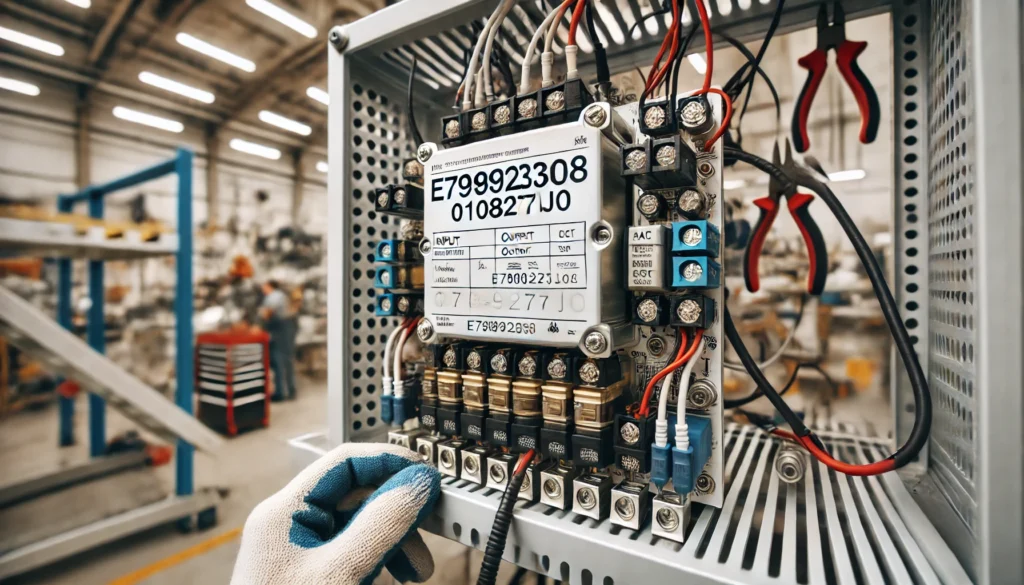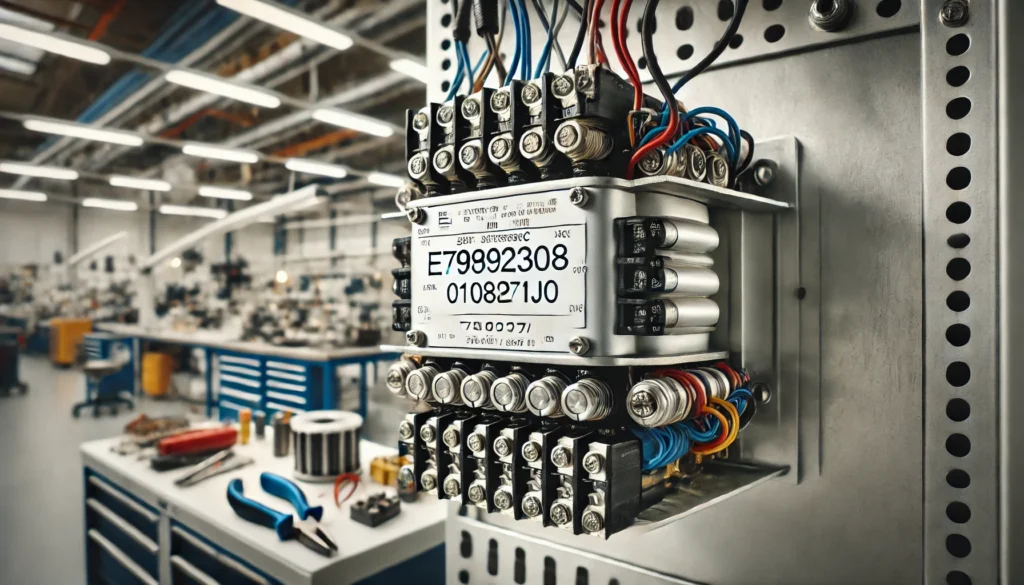Comprehensive Guide to 24VDC Transformer No E79892308 0108271J0 Wiring

Wiring a 24VDC transformer properly is crucial for ensuring safety, efficiency, and the longevity of the device. This guide will walk you through everything you need to know about the 24VDC transformer no E79892308 0108271J0 wiring process. From understanding its specifications to troubleshooting common issues, this comprehensive guide ensures you’re equipped to handle this task with confidence.
What is a 24VDC Transformer?
A 24VDC transformer is an electrical device designed to convert AC power into a stable 24V DC output. The “E79892308 0108271J0” model is a specific variant that offers unique features, making it suitable for various applications such as HVAC systems, control panels, and industrial equipment.
Key Features:
- Input Voltage: Typically operates on standard AC mains (120V or 240V).
- Output Voltage: Provides a stable 24V DC for powering compatible devices.
- Applications: Widely used in automation systems, security devices, and low-voltage lighting.
Specifications of 24VDC Transformer No E79892308 0108271J0
Understanding the specifications of this transformer model is essential before wiring. Below is a table summarizing its key parameters:
| Specification | Details |
|---|---|
| Model Number | E79892308 0108271J0 |
| Input Voltage | 120V / 240V AC |
| Output Voltage | 24V DC |
| Power Rating | 60W |
| Frequency | 50/60 Hz |
| Application | Industrial/Commercial |
Safety Guidelines
Before you begin wiring, it is essential to prioritize safety:
- Disconnect Power: Always turn off the power supply to avoid electrical shocks.
- Wear Protective Gear: Use insulated gloves and tools to handle electrical components.
- Follow Local Codes: Adhere to electrical standards and codes in your region to ensure compliance.
- Use Proper Tools: Equip yourself with the right tools such as wire strippers, screwdrivers, and a multimeter.
Tools and Materials Required
To wire the 24VDC transformer no E79892308 0108271J0, you’ll need the following tools and materials:
- Wire Strippers: For removing insulation from wires.
- Screwdrivers: To secure terminal connections.
- Multimeter: For testing voltage and continuity.
- Wires: Use appropriate gauge wires based on the transformer’s specifications.
- Mounting Hardware: Screws and brackets for installation.
Step-by-Step Wiring Instructions
1. Identify Transformer Terminals
Examine the transformer’s labels to identify the primary (input) and secondary (output) terminals. Common labels include:
- L and N: Line and Neutral for the input side.
- + and –: Positive and Negative for the output side.
2. Wiring the Primary Side (AC Input)
- Connect the Live (L) wire to the designated terminal.
- Attach the Neutral (N) wire to its respective terminal.
- Ensure the ground wire is securely connected to the grounding terminal to prevent electrical hazards.
3. Wiring the Secondary Side (DC Output)
- Connect the positive wire to the + terminal.
- Connect the negative wire to the – terminal.
- Use a multimeter to verify the polarity and ensure correct connections.
4. Secure Connections and Test
- Double-check all connections for tightness and accuracy.
- Power on the transformer and use a multimeter to verify the 24V DC output.
- Inspect for irregularities such as overheating or abnormal noise.
Common Wiring Configurations
The wiring setup may vary depending on your application. Below are common configurations:
Standalone Transformer Setup
- Suitable for isolated systems requiring 24V DC power.
- Connect directly to the load using the output terminals.
Integrated System Configuration
- Used in systems like HVAC or automation panels.
- Connect the transformer to the system’s power distribution panel.
Troubleshooting and Maintenance
If the transformer doesn’t work as expected, follow these steps:
- No Output Voltage:
- Check input power supply.
- Inspect terminal connections for looseness or corrosion.
- Overheating:
- Ensure the load does not exceed the power rating.
- Verify proper ventilation around the transformer.
- Voltage Fluctuations:
- Use a stabilizer to ensure consistent input power.
Maintenance Tips:
- Regularly inspect wiring and terminals for wear and tear.
- Clean the transformer casing to prevent dust accumulation.
- Test output voltage periodically to ensure consistent performance.
Frequently Asked Questions (FAQs)
1. Can this transformer be used outdoors?
No, the transformer must be housed in a weatherproof enclosure for outdoor use.
2. What is the maximum load capacity?
The transformer supports up to 60W. Ensure the total load does not exceed this rating.
3. How do I identify a faulty transformer?
Use a multimeter to check continuity and output voltage. Replace the transformer if values are inconsistent.
4. Can I use this transformer with a battery backup system?
Yes, it can be integrated with a compatible battery charger and backup system.
5. Is professional installation necessary?
While not mandatory, professional installation is recommended for complex systems.
Conclusion
Proper wiring of the 24VDC transformer no E79892308 0108271J0 ensures safe and efficient operation. By following this detailed guide, you can confidently wire the transformer for various applications. Remember to prioritize safety, verify connections, and perform regular maintenance for optimal performance.
Additional FAQs related to 24VDC transformer no E79892308 0108271J0 wiring:
1. What type of wire should I use for connecting this transformer?
You should use insulated copper wires that match the current rating of the transformer and the load. Typically, for low-voltage DC applications, 16-18 AWG wires are suitable, but heavier loads may require thicker wires. Always follow local electrical codes when selecting wire types.
2. Can I use this transformer to power multiple devices simultaneously?
Yes, you can use the 24VDC transformer to power multiple devices, provided the combined current draw of all connected devices does not exceed the transformer’s maximum rated power output (e.g., 60W for this model). Use proper distribution wiring and ensure equal load distribution.
3. How do I protect the transformer from power surges?
You can install surge protectors or circuit breakers on the input side to protect the transformer from voltage spikes. Additionally, using a voltage stabilizer can ensure consistent input voltage, preventing potential damage to the transformer.
4. Can the transformer be mounted in any orientation?
Transformers are generally designed to be mounted in specific orientations for optimal heat dissipation. Check the manufacturer’s instructions for guidance. If no orientation is specified, mount it in a way that allows for proper ventilation around the unit.
5. What should I do if the transformer emits a buzzing noise?
A slight buzzing noise is normal for transformers due to magnetic vibrations. However, if the noise becomes loud or unusual, it could indicate loose mounting, excessive load, or internal faults. Inspect the connections, secure the mounting hardware, and ensure the load is within acceptable limits. If the issue persists, consult a professional.
Recommended Articles:
Valve Adjustment Cost 336.81 After Tax – Detailed Guide
Nigori Foam Lactose Free: Guide to Creamy, Delicious, and Dairy-Free Sake Creations
MTTB Subtitles for Mushoku Tensei Season 2: A Comprehensive Guide
Which Shim Should I Buy Reddit Hjazzmaste — The Ultimate Guide
Comprehensive Guide to 24VDC Transformer No E79892308 0108271J0 Wiring







